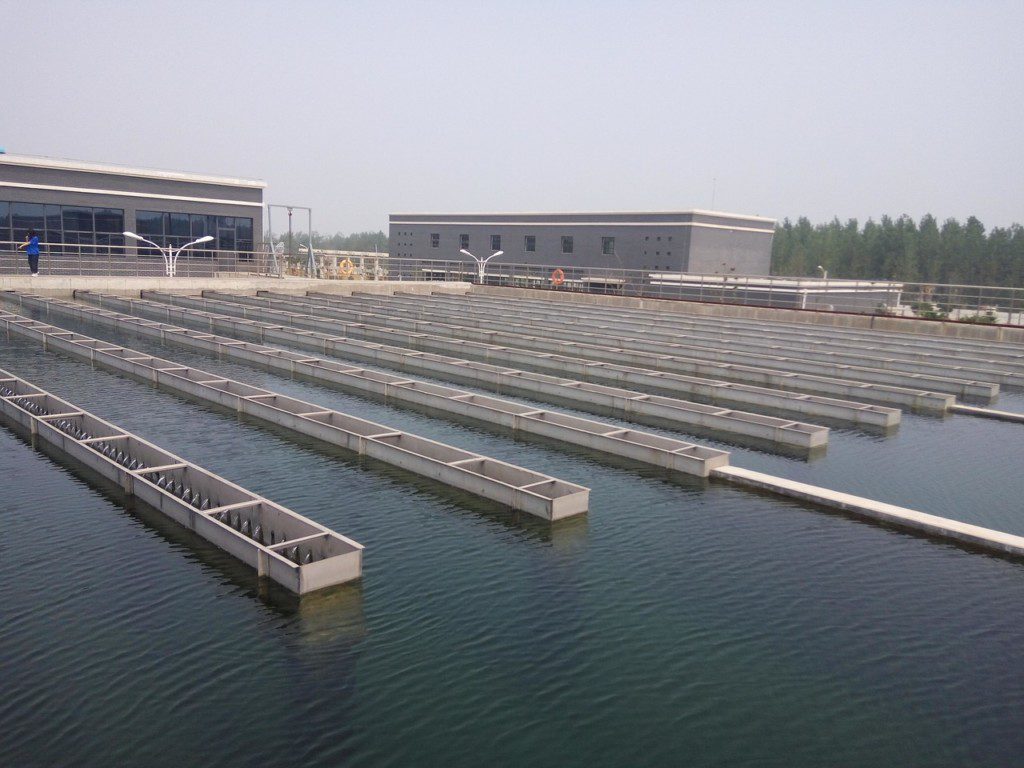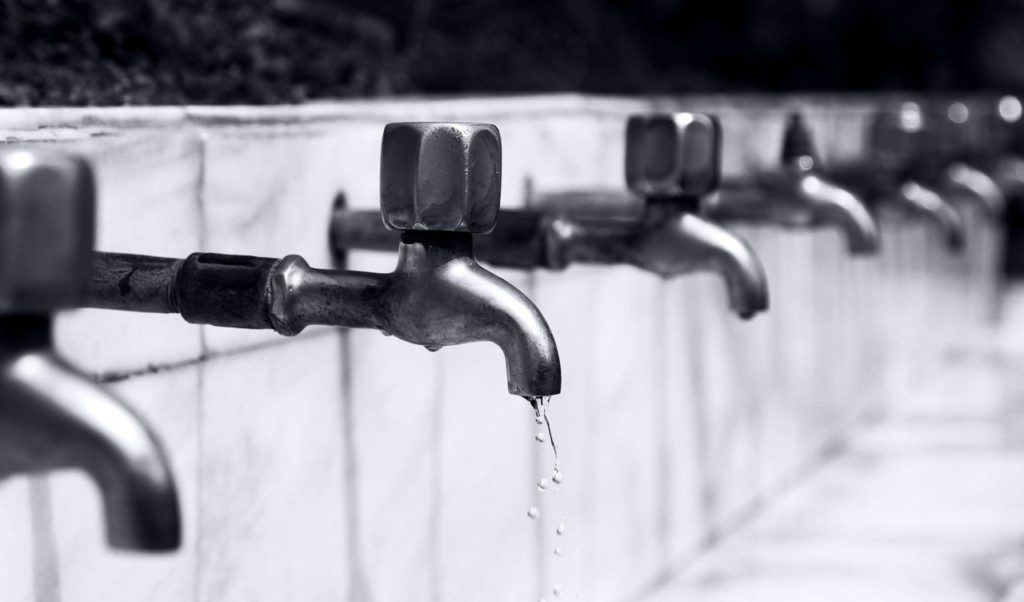How To Set Water Softener Regeneration Time
When water contains high levels of mineral content, it's referred to every bit hard water. It's common for water hardness to occur when a substantial amount of dissolved magnesium and calcium have contaminated the water. If you live in an apartment or home that doesn't contain some kind of h2o softener, you may discover difficult h2o when you launder your easily or take a shower.
While the effects mainly depend on the exact amount of water hardness, your easily may not feel completely clean afterward you wash them because of how lather interacts with the calcium in the water. After washing dishes, any glasses you lot use may have spots or a film of balance on them, which ways that the h2o contains high levels of calcium and magnesium.
To combat water hardness, information technology's important to use a water softener that tin can get rid of the h2o's calcium and magnesium concentrations. A h2o softener is any kind of filtration organisation that'southward capable of removing these minerals from the water. Once you install a water softener in your domicile or industrial facility, the system works by taking water from a mineral tank and sending it through resin beads.
Before the water gets sent through the beads, they are charged with a basic sodium ion, which ensures that they have a negative charge. On the other hand, any magnesium and calcium minerals in the water consist of a positive charge. When the negatively charged beads come into contact with positively charged minerals like magnesium and calcium, the chaplet will hold the minerals in place before releasing a harmless sodium ion. One time the hardness minerals have been removed from the h2o, the water is naturally softened.
The majority of water softeners utilise a regeneration procedure while the softening process is ongoing. When looking specifically at ion-exchange water softeners, these systems need to use the regeneration procedure because of how they operate. As mentioned previously, hard water passes through resin beads before getting distributed throughout the home or industrial facility.
Once the magnesium and calcium minerals come up into contact with the resin beads, they will be held in place, which means that they eventually get-go to accumulate around the chaplet in question. The regeneration process is designed to clean the chaplet periodically to ensure that the water softener continues to work efficiently.
While the regeneration process is ongoing, the resin beads in the water softener are flooded with saltwater, which ensures that the hardness minerals are taken off the resin chaplet and sent downwardly a nearby drain. Now that the resin beads are cleaned, the water softener can again office without issue. The regeneration wheel tends to occur on a weekly basis. This article offers an in-depth look at h2o softener regeneration and all that this process entails.
The Water Softening Regeneration Process
 The h2o softening regeneration procedure occurs over v primary stages, during which salt brine gets sent onto the resin chaplet to finer remove all of the accumulated hardness minerals. The five main stages of this process include:
The h2o softening regeneration procedure occurs over v primary stages, during which salt brine gets sent onto the resin chaplet to finer remove all of the accumulated hardness minerals. The five main stages of this process include:
- Fill – The h2o softener is outfitted with a salt storage container. To begin the regeneration process, water volition flow directly into the storage container, after which the salt will become dissolved in the water and form a alkali solution. A brine solution is necessary if you desire the h2o to exist able to get rid of the hardness minerals that have accumulated on the resin beads.
- Brining – During the brining stage of this process, the alkali solution is sent from the salt storage tank to the resin tank, which is where the resin beads are housed. At this stage of the process, the salt brine will choice up the hardness minerals.
- Brine rinse – Once a certain amount of the brine solution has been used for the regeneration process, the brine valve will shut. From here, the water will continue to menses downwardly the aforementioned path but without the brine solution. The minerals and brine are properly discharged to a nearby drain from the resin tank.
- Backwash – This phase of the regeneration procedure involves water traveling upwards and through the large resin tank at a quickened flow rate, which helps to affluent the leftover sediments, fe, and dirt from the system.
- Fast rinse – Once the backwash process has been completed, a fast rinse will occur, which involves water flowing apace down the resin tank. Any remaining alkali that exists around the lower portion of the tank will exist picked up by this water and taken through the resin beads, which ensures that the brine sticks to the chaplet. Only when this stage has been completed can the water softener begin its standard softening process again.
As mentioned previously, the principal treatment that's used during this process is a salt alkali solution, which is a bones combination of salt and water. When done properly, the regeneration process typically takes around two hours to be completed.
How Does the Water Softener Know to Regenerate?
If you're wondering how a water softener knows when to regenerate, the answer is that it depends on the type of regeneration that the system uses. In most situations, a h2o softener will choose to get-go the regeneration procedure once the command valve indicates that it's time to do so. The 2 forms of regeneration that a water softener can utilise include:
- Demand regeneration – When a water softener uses demand regeneration settings, the control valve volition keep rail of how much h2o is being used before starting the regeneration process. This procedure only begins afterwards a set amount of water has been sent through the h2o softener. While hard h2o tin can contain different levels of contaminants, using demand regeneration ensures that the regeneration process e'er occurs at a fix time, which means that the resin beads should never become too inefficient earlier they are properly cleaned. If you use a higher amount of water during a given calendar week, the regeneration process may occur more frequently. It's common for water apply to increase when yous have guests or family members stay at your home.
- Time-initiated regeneration – The time-initiated regeneration process begins merely later on a specific period of time, which means that h2o use isn't taken into account. Even if you've hardly used any water during the calendar week, the regeneration process will continue to occur at the same interval. The control valve will exist outfitted with a clock that tells the water softener exactly when the regeneration process should start. There are 2 settings that you lot'll need to take into account. For example, y'all will need to determine the number of days between each regeneration bike. Information technology's besides of import to set the time of day during which the regeneration procedure will occur. Probable the best fourth dimension of solar day for this process to occur is when h2o apply is low, which means that it should take identify overnight. As touched upon earlier, this entire process takes around two hours to finish.
Even though both of these processes will properly soften whatsoever hard h2o that's being sent to your home or industrial facility, the demand regeneration process is considered to exist the more than reliable, efficient, and constructive one. Demand regeneration allows the water softener to be cleansed merely when the softening capacity of the resin chaplet has been used up. On the other manus, the fourth dimension-initiated regeneration process could filter the water well earlier or after the resin beads have been used up.
Length of Time a Water Softener Regenerates
 The majority of water softeners are designed to begin the regeneration process at 2AM, which means that the process will likely finish effectually 4AM. It's important for the regeneration process to occur at this fourth dimension considering the household likely won't exist using whatever water. The time between each regeneration depends on household water use and overall h2o hardness levels.
The majority of water softeners are designed to begin the regeneration process at 2AM, which means that the process will likely finish effectually 4AM. It's important for the regeneration process to occur at this fourth dimension considering the household likely won't exist using whatever water. The time between each regeneration depends on household water use and overall h2o hardness levels.
Keep in mind that the h2o softener must take a water reserve capacity of around 25 percent before the regeneration procedure tin accept place. At this reserve capacity, the resin beads will exist at a 75 percent saturation rate, which ways that the beads contain effectually 75 percentage of the full amount of hardness minerals they tin can suit.
The exact amount of h2o that's used during the regeneration process depends mainly on how large the h2o softener is. If the water softener is designed to accommodate a family of four, you tin await the regeneration process to utilize anywhere from 35-70 gallons of h2o. Still, the number of hardness minerals in the h2o will besides decide how much water is used during regeneration. If your h2o doesn't contain high levels of hardness minerals, the softener may only use twenty-25 gallons of water.
Fifty-fifty though the regeneration process requires a substantial sum of water, this process allows you to reduce your water usage. When y'all continue to utilise hard water that hasn't been softened, you could waste some of this h2o. It's too possible for hard h2o to damage habitation appliances, which can be plush to replace. Installing a water softener in your dwelling ensures that the water never leaves mineral deposits on your glasses or soap remainder on your easily fifty-fifty after you've washed them.
How To Set Water Softener Regeneration Time,
Source: https://sensorex.com/2021/07/05/water-softener-regeneration/
Posted by: rasmussenalwainter45.blogspot.com


0 Response to "How To Set Water Softener Regeneration Time"
Post a Comment